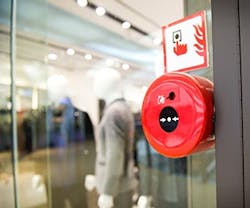New Requirements for Fire Pumps in High-Rise Buildings
The 2016 edition of the NFPA 20: Standard for the Installation of Stationary Pumps for Fire Protection specically targets fire pumps installed in high-rise buildings, with the intention of standardizing a fire pump design in high-rise facilities to ensure an appropriate level of reliability.
There has been a trend with the contruction of new buildings being built higher and higher. The Jeddah Tower, currently under construction in Saudi Arabia, will reach 3,280 feet when complete in 2020. After buildings exceed 400 to 500 feet, higher floors are often beyond the pumping capacity of fire departments, which can result in loss of life or property in the event of a fire. In response, the NFPA 20 Technical Committee on Fire Pumps has developed specific provisions regarding the fire pump and water supply arrangement. Under the new requirements, even if a single piece of equipment becomes impaired, the full fire protection demand of the building can still be met.
One of the most significant changes in fire pump design for high-rise buildings is that fire pumps operating in a series can no longer be located on different floors. The practice of vertical staging — placing the second and third fire pump in series on higher floors —requires that the discharge pressure from the lower pump be sufficient enough to feed the pumps on the higher floors. Consequently, if the fire pump at the lowest level fails, the rest of the fire pumps in series will also fail for lack of adequate suction pressure.
Under the new NFPA 20 provisions, fire pumps in series must be installed in the same pump room. This modified fire pump design increases the reliability of the overall fire pump operation. When the pumps are located on the same floor, failure of a lower level pump will no longer result in cavitation and damage to the higher-level pumps that it feeds. In the updated arrangement, if the first pump in series fails, there would still be significant enough pressure to the other pumps in series to pressurize the system. NFPA 20 4.20.2.3 states that no more than three pumps shall be allowed to operate in series as a part of a series fire pump unit.
To access the new edition of the NFPA provisions and learn more about specific details of the standard, please click here.
